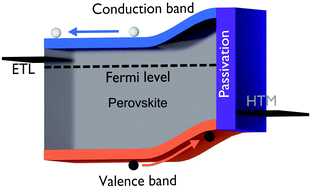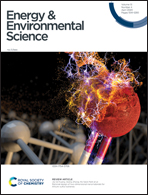Band-bending induced passivation: high performance and stable perovskite solar cells using a perhydropoly(silazane) precursor†
Abstract
Surface passivation of the perovskite photo absorber is a key factor to improve the photovoltaic performance. So far robust passivation strategies have not yet been revealed. Here, we demonstrate a successful passivation strategy which controls the Fermi-level of the perovskite surface by improving the surface states. Such Fermi-level control caused band-bending between the surface and bulk of the perovskite, which enhanced the hole-extraction from the absorber bulk to the HTM side. As an added benefit, the inorganic passivation layer improved the device light stability. By depositing a thick protection layer on the complete device, a remarkable waterproofing effect was obtained. As a result, an enhancement of VOC and the conversion efficiency from 20.5% to 22.1% was achieved. We revealed these passivation mechanisms and used perhydropoly(silazane) (PHPS) derived silica to control the perovskite surface states.

- This article is part of the themed collections: Energy & Environmental Science Cover Art and 2020 Journal of Materials Chemistry Lectureship Winner: Giulia Grancini


 Please wait while we load your content...
Please wait while we load your content...